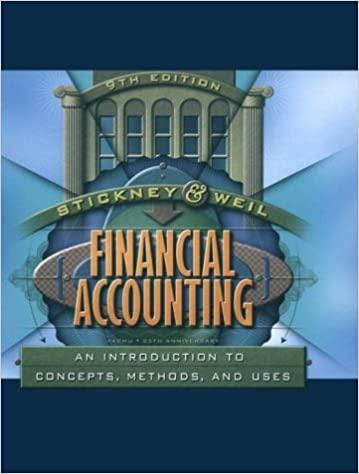Mandatorily redeemable preferred shares. (Adapted from an idea and materials provided by Kathcrine Schipper. ) Exhibit 12.16
Question:
Mandatorily redeemable preferred shares. (Adapted from an idea and materials provided by Kathcrine Schipper. ) Exhibit 12.16 reproduces excerpts from the financial statements of Wendy"s International for Years 5 and 6. The statement of cash flows indicates that Wendy"s does not generate from operations sufficient cash to support its investing activities. In Year 5. Wendy"s issued $2S4 million of long-term debt.


I needed still more funds in Year 6 but did not want its halance sheet to show more debt. It undertook the following series of transactions: (1) Formed a subsidiary, Wendy's Financing I (Financing), wholly owned, to issue preferred equity and to use the proceeds to acquire a single asset, bonds issued by Wendy's (2) Caused the subsidiary to issue to the public $200 million of preferred shares. which Wendy's guaranteed just as though this were Wendy's debt issue (3) Issued $202 million of its own debt to Financing in return for the cash that Fi- nancing had just raised from the preferred issue After this series of transactions, the public holds preferred shares with Wendy's guar- antee, which means that the market will price those shares much as it would Wendy's debt with similar guarantees. Wendy's describes the results of this series of transac- tions as follows, taken from its notes;

I. ;i statutory business trust, is a wholly-owned consolidated subsidiary of the company with its sole asset being $202 million aggregate principal amount of 5% Convertible Subordinated Debentures due September 15. Year 26, of Wendy's (the trust debenture).
The trust preferred securities are non-voting (except in limited circumstances), pay quarterly distributions at an annual rate of 5%, carry a liquidation value of $30 per share and are convertible into the company's common shares at any time prior to the close of business on September 15. Year 26, at the option of the holder. The trust preferred securities are convertible into common shares. . . . The company [that is. Wendy's] has executed a guarantee with regard to the trust preferred securities. The guarantee, when taken together with the company's obligations under the trust indenture, the indenture pursuant to which the trust indenture was issued, and the applicable trust document, provides a full and an unconditional guarantee of the trust's obligations under the trust preferred securities.
In thinking about and responding to the questions below, you may ignore income taxes. Firms pay careful attention to the income tax treatment of securities such as the ones in this case, but you do not need to worry about such issues here.
a. Explain why Wendy's might prefer following this course of action rather than directly issuing its debt in the market.
b. Why does the debt issued by Wendy's not appear on Wendy's balance sheet?
c. Compute Wendy's debt-equity ratio for the end of Year 5 and Year 6. For Year 6, make two calculations, one assuming the tnandatorily preferred shares are debt and the other assuming they are shareholders" equity. Treat Defened Income Taxes as shareholders" equity in all calculations.
Step by Step Answer:

Financial Accounting An Introduction To Concepts Methods And Uses
ISBN: 9780030259623
9th Edition
Authors: Clyde P. Stickney, Roman L. Weil





